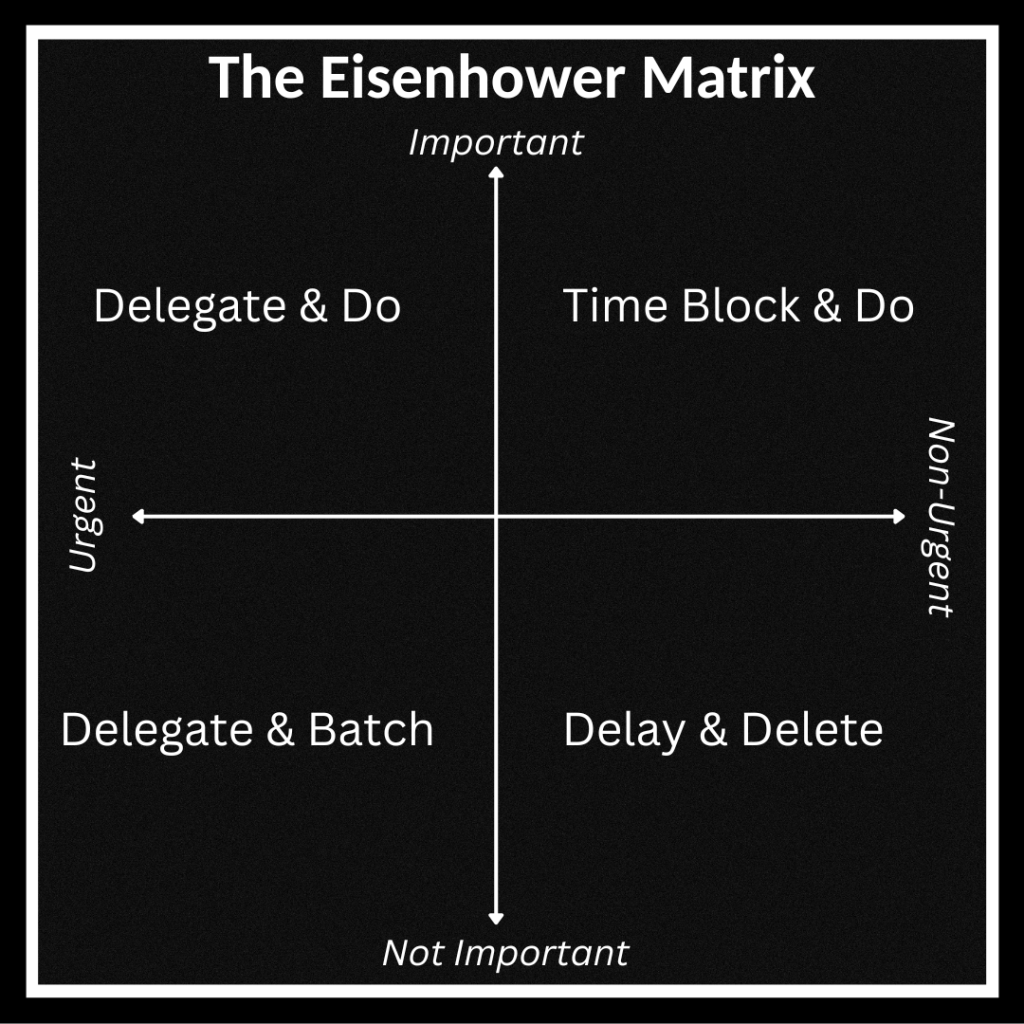Eisenhower Matrix (3 Min Read) | Vol. 171
October 03, 2025
“What is important is seldom urgent and what is urgent is seldom important.” – Dwight D. Eisenhower
Eisenhower Matrix
President Dwight D. Eisenhower served as a five-star general and Supreme Commander of the Allied Expeditionary Force in WWII. He oversaw the Normandy invasion, a critical turning point in the defeat of Germany. He served two terms as President. He established the Interstate Highway System, created NASA, and signed the Civil Rights Acts of 1957 and 1960 into law.
Ike, as he was known, was no slouch.
He understood better than most Australian Prime Minister Bob Hawke’s maxim: “The things which are most important don’t always scream the loudest.” Eisenhower was relentless in distinguishing between the important and the urgent.
Harried leaders and entrepreneurs often fall into the “Busyness Trap.” We face an endless stream of urgent tasks masquerading as important ones. There always seems to be another fire to put out. The urgent always feels important, and the important rarely feels urgent. So we delay the things that matter most until, through neglect, they also become urgent. Cramming for the final becomes our default mode.
The Eisenhower Matrix is a tool for battling busyness. With a moment’s reflection, we can label our to-dos as important or not important, urgent or non-urgent. And then prioritize appropriately.

Urgent & Important – These are priority activities that you or someone you trust should do today. Think: Follow up on leads, prepare for a presentation, respond to customer complaints, handle crises, and offer just-in-time coaching to your people. Whether you do them yourself or delegate them, they must be done.
Important & Non-Urgent – These are your big rocks connected to your long-term goals. These activities tend to compound over time. Think: Work your database, go to the gym, invest in personal and professional development, strategic planning, and do your ONE Thing. Time block these activities and consistently do them.
Urgent & Not Important – This is the place busy professionals go to hide. Think: Replying to emails, attending meetings, scheduling travel or activities, and responding to social media and texts. Urgency creates the illusion of importance. Activity creates the illusion of productivity. Yet these are all activities stealing time and attention from your most important work. Delegate these tasks if you can or batch them if you can’t.*
Non-Urgent & Not Important – These are all the things we feel guilty for (or they’re our guilty pleasures.) Think: Surfing social media, tidying up our workspace, getting to inbox zero, over-planning, and idle chit-chat. They can be generally harmless unless they steal focus and time from important work. These can often be deleted entirely from your workday or delayed to an appropriate time.
Here’s your challenge. When you are launching your day, focus on the important things first. Tackle the urgent and important task. And time block the non-urgent important work.
One question to ponder in your thinking time: What important work am I avoiding because it doesn’t feel urgent?
Make an Impact!
Jay Papasan
Co-author of The ONE Thing, The Millionaire Real Estate Agent & author of The Rookie Real Estate Agent
* Batching is time blocking short periods of time to do urgent but ultimately unimportant work. An example would be giving yourself 30 minutes three times a day to triage your inbox.

Leave a Reply
You must be logged in to post a comment.